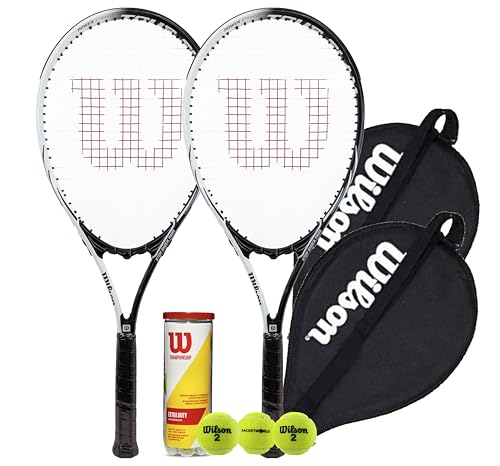Understanding the Types of Tennis Rackets: Which One is Right for Us?
The Basics of Tennis Racket Types
When it comes to tennis rackets, understanding the types available can profoundly influence our playing style. There are three main types: power rackets, control rackets, and tweener rackets. Power rackets are typically lighter, offering more manoeuvrability and generating extra force on our shots—ideal for beginners or recreational players who rely on speed. Control rackets, on the other hand, are heavier and provide more stability, making them suitable for experienced players who favour precision and spin in their game. Then we have tweener rackets, which strike a balance between power and control—great for intermediate players looking to develop their skills further.
Choosing Based on Playing Style
Our playing style should also guide our decision. If we’re aggressive and often play at the net, a lighter power racket can enhance our quick movements. For baseline players who aim to keep rallies going, a control racket can afford us greater accuracy. It’s essential to match our racket choice with how we prefer to play, as this can significantly impact performance and enjoyment on the court.
Key Features to Consider When Choosing a Tennis Racket
Racket Weight and Balance
Weight and balance are crucial features influencing our game. Heavier rackets provide stability but require more strength to handle, while lighter options allow for faster swings. Balance can be head-heavy, giving more power, or head-light, offering better control. As we select our racket, think about our physical strength and playing habits—this will help in finding a suitable weight and balance that complements our gameplay.
String Pattern and Size
The string pattern affects how the racket interacts with the ball. Open string patterns provide more spin, while closed patterns offer more control. Additionally, we should consider the racket’s head size; larger heads offer a bigger sweet spot, making it easier to hit the ball well, while smaller heads allow for more control over shots. Matching the string pattern and head size to our skill level and style of play can drastically enhance our performance.
How to Choose the Perfect Grip Size for Comfort and Control
Importance of Grip Size
Selecting the right grip size is essential for maximum comfort and control. An inappropriate grip can lead to discomfort and hinder our performance. If the grip is too small, we might have to squeeze too tightly which can cause fatigue and injuries. Conversely, a grip that’s too large can reduce our wrist movement and control over the racket. Generally, when holding the racket, we should be able to fit a finger comfortably between the fingers and palm of our hand.
Tips for Measuring Grip Size
To measure our grip size accurately, we can use a straightforward method. Simply hold the racket as we would during play, and make sure that we can place our index finger comfortably alongside our fingers and palm. Alternatively, we can measure the distance from the tip of our ring finger to the second line of our palm, which typically corresponds to a specific grip size. Being mindful of this step ensures not only our comfort and control but also helps in enhancing our overall performance on the court.
Top Recommendations for Different Skill Levels
Beginners’ Choices
For beginners, we recommend rackets that are lightweight and have a larger head size. These features make it easier to contact the ball consistently. Models like the lightweight beginner rackets provide extra power and are forgiving on off-centre hits. They can help us build confidence as we develop our strokes.
Intermediate and Advanced Options
Intermediate players might benefit from tweener rackets that offer a good mix of power and control, giving room to grow our skills. Advanced players should consider control rackets that weigh more and provide greater precision. Matching the racket specifics with each skill level allows us to evolve our game effectively.
Maintenance Tips to Extend the Life of Our Tennis Racket
Routine Care
Taking care of our tennis racket can significantly prolong its lifespan. Routine checking for any signs of wear and tear, such as fraying strings or cracks in the frame, is essential. We should store the racket in a protective cover, keeping it out of extreme temperatures, which can damage the materials. Regularly restringing the racket also helps maintain optimal performance.
Cleaning and Handling
After playing, we should wipe down the strings and frame with a soft cloth to remove dirt and sweat, preventing corrosion over time. Also, it’s a good idea to avoid leaving the racket in our car or damp environments, as these conditions can harm both the strings and frame. Taking these simple steps ensures that our racket remains in great condition, ready for the next match.






























